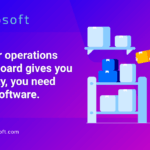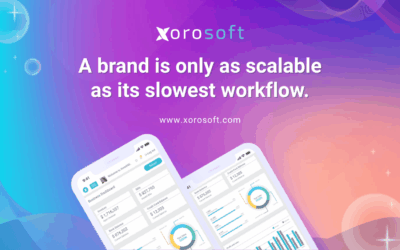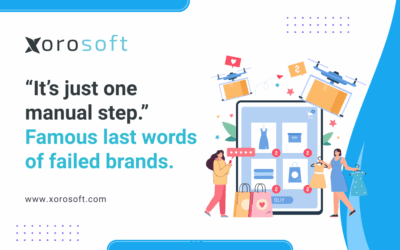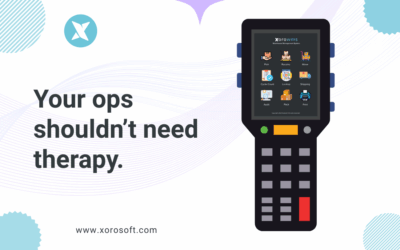
Why fast-growing brands need ecommerce inventory automation
Every fast-growing ecommerce brand wants one thing: to spend 100% of their time on brand growth, not on back-office chaos. Consequently, the first operational decision that separates calm scale from constant firefighting is simple: enable ecommerce inventory automation early rather than late.
Because manual edits pile up quickly, founders and COOs lose time they can never recover. Moreover, disconnected apps create blind spots that compound as order volume rises. Therefore, if you want speed that lasts, you need systems that update themselves while your team builds the brand.
How operational friction creeps in without automated inventory systems
At first, a spreadsheet fix seems harmless. However, as orders increase, the same “quick fix” turns into a recurring burden. In practice, the pain shows up the same way across most brands:
-
Teams spend hours reconciling orders across systems; meanwhile, shipments wait.
-
Inventory updates lag between Shopify, Amazon, and the warehouse; consequently, counts drift and confidence drops.
-
Finance reports arrive after decisions are made; therefore, leaders guess instead of act.
-
Fulfillment slows while marketing accelerates; as a result, customers feel the gap.
Because these frictions arrive quietly, leaders often miss their cumulative impact. Eventually, though, the signals become impossible to ignore: rising costs, slower cycle times, and a team that feels behind even on good days.
Why decision velocity defines ecommerce inventory automation success
In ecommerce, speed is not only shipping faster; instead, it is seeing reality sooner and acting with clarity. When systems are synchronized, you stop reacting to yesterday’s surprises and, instead, you steer today’s outcomes. Therefore, the real advantage emerges from information that moves as quickly as your customers do.
With ecommerce inventory automation, several shifts happen immediately. First, you reorder before you run out because stock signals update in real time. Second, you protect margins because cost and price data reconcile automatically. Third, you route orders intelligently because the system evaluates location, availability, and promised ship dates without asking a human to intervene. Consequently, every decision becomes simpler, faster, and more accurate.
Case example: how automation reduced fulfillment time by 40%
Brand: Velocio (Apparel & Accessories)
Before automation, the team relied on Shopify, QuickBooks, and spreadsheets. As a result, stockouts appeared weekly, and the average order cycle time hovered around 72 hours. Furthermore, manual edits consumed hours that should have gone to growth tasks.
After implementing inventory optimization and automation, the picture changed quickly. As systems began to sync in real time, pick accuracy rose by 25%. Moreover, order cycle time fell by roughly 40%. Because inventory, purchasing, and accounting stayed aligned, cash conversion improved by 22%. In short, the team did not grow larger; instead, the operation grew smarter, so the brand moved faster.
Six proven steps to implement ecommerce inventory automation
Each step follows the same logic: goal → action → metric. Because clarity accelerates adoption, keep each change small, practical, and measurable.
1) Integrate all channels in real time
Goal: Remove blind spots across sales and stock.
Action: Connect Shopify, Amazon, retail POS, and wholesale portals into one ERP. Consequently, the same truth appears everywhere at once.
Metric: Maintain inventory accuracy at or above 98%.
2) Eliminate manual order edits
Goal: Reduce errors and reclaim hours.
Action: Automate order routing by stock, location, and service-level rules; likewise, auto-hold orders that violate rules.
Metric: Reach 99% pick accuracy and cut rework significantly.
3) Link accounting with fulfillment
Goal: See margins daily, not monthly.
Action: Sync landed costs, purchase orders, and goods receipts automatically; therefore, COGS updates continuously.
Metric: Achieve same-day profitability visibility.
4) Automate supplier reordering
Goal: Prevent stockouts before they start.
Action: Set reorder points and safety stock; then auto-generate purchase orders and supplier alerts.
Metric: Hold stockout rate under 3% while protecting working capital.
5) Simplify multi-warehouse operations
Goal: Shorten delivery cycles and trim shipping spend.
Action: Use rules for nearest-warehouse shipping, transfer recommendations, and backorder prevention; meanwhile, surface exceptions for humans only when needed.
Metric: Consistently ship within 24 hours.
6) Build real-time reporting dashboards
Goal: Improve decision velocity across teams.
Action: Publish live dashboards for sales, fulfillment, margins, and aged stock; moreover, push alerts when thresholds are crossed.
Metric: Give every department instant access to the same KPIs.
Because each step compounds, the operation becomes lighter. Consequently, managers stop chasing data, and teams start improving outcomes.
A five-day action plan you can start this week
Migration does not have to feel heavy. Instead, treat implementation as a sequence of short, low-risk moves.
Day 1 – List repetitive workflows
Document every task repeated weekly: order edits, stock adjustments, and spreadsheet merges. Consequently, you’ll spot clear automation candidates.
Day 2 – Connect Shopify and Amazon
Integrate channels with your ERP; as a result, orders, returns, and adjustments synchronize automatically.
Day 3 – Sync accounting with warehouses
Link purchasing, landed costs, and receipts so COGS stays current; therefore, finance gets daily truth.
Day 4 – Configure reorder and routing rules
Define thresholds, suppliers, and warehouse priorities; consequently, the system handles routine decisions.
Day 5 – Launch live dashboards and alerts
Expose order cycle time, pick accuracy, and inventory accuracy to the whole team; meanwhile, set alerts for violations so issues surface immediately.
Because the plan reduces risk and increases visibility, momentum builds without downtime.
The impact of automation, stated plainly (no table)
Before automation, pick accuracy often hovered near 92%, order cycle time typically sat around 72 hours, cash conversion regularly stretched to 30 days, and stockout rate frequently exceeded 12%. After automation, those same numbers usually shift dramatically: pick accuracy climbs toward 99%, order cycle time drops to about 24 hours, cash conversion improves to roughly 18 days, and stockouts fall to below 3%. Consequently, leaders regain confidence, teams recover time, and customers notice the upgrade almost immediately.
What leaders ask before they switch
Will this replace Shopify?
No. Instead, automation enhances Shopify by connecting inventory, accounting, and fulfillment into a single workflow. Consequently, your store stays familiar while your operation becomes smarter.
Do we need technical expertise?
No. Modern cloud ERPs, including Xorosoft, are designed for non-technical operators. Therefore, setup completes in days rather than months.
Can we start small?
Yes. Begin with inventory automation. Then expand into purchasing, accounting, or BI as needs evolve. Because the modules connect natively, each addition compounds the benefit.
When will we see results?
Most brands see measurable gains within 30–45 days. Consequently, teams feel the relief quickly, and leaders trust the data sooner.
The competitive edge of real-time operations
Once automation runs quietly in the background, your operation begins to feel different. Because data arrives on time, decisions arrive earlier. Likewise, because routing follows rules, shipments leave sooner. Furthermore, because finance sees costs as they occur, margin decisions happen while they still matter.
As a result, your calendar shifts from emergency fixes to strategic moves. Meanwhile, your team spends its energy on merchandising, partnerships, and customer experience. Ultimately, that is the hidden advantage of brands that move faster: clarity first, then growth at speed.
If you want those advantages now, the path forward is uncomplicated.
Explore tools that help you scale smarter
- See why Xorosoft ranks #1 for Ease of Use on G2
- Try the Xorosoft ERP Shopify App
- Explore XoroONE
- Book a Live Demo
Automate your inventory, unify your back office, and free your team. Consequently, you’ll spend more time building your brand and less time rescuing it.









